The Perforated Casing Pipe and What You Need to Know
Introduction
In the world of drilling and well construction, the perforated casing pipe plays a pivotal role. These pipes are essential components in various industries, including oil and gas, water well drilling, and geothermal energy. They are designed to support the wellbore, prevent the collapse of surrounding formations, and allow fluids to flow into the well. This comprehensive guide delves into the intricacies of perforated casing pipes, covering their design, applications, manufacturing processes, and key considerations for selection and installation.
Punched Tube Hose types
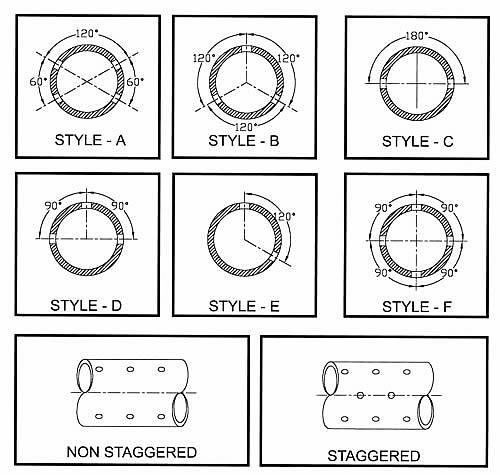
Perforated Supporting Tube/Pipe Construction Illustration
Product parameters
|
Pipe Size (inch)
|
Number of hoses (sq in./ft)
|
Hole Diameter (inch)
|
Open Area (sq in./ft)
|
|
3/4
|
78
|
3/16
|
2.15
|
|
1
|
54
|
5/16
|
4.14
|
|
1-1/4
|
66
|
5/16
|
5.06
|
|
1-1/2
|
78
|
5/16
|
5.98
|
|
2-1/16
|
78
|
5/16
|
5.98
|
|
2-3/8
|
90
|
3/8
|
9.94
|
|
2-7/8
|
102
|
3/8
|
11.26
|
|
3-1/2
|
126
|
3/8
|
13.91
|
|
4
|
138
|
3/8
|
15.24
|
|
4-1/2
|
150
|
3/8
|
16.56
|
|
5
|
162
|
3/8
|
17.88
|
|
5-1/2
|
174
|
3/8
|
19.21
|
|
6-5/8
|
186
|
3/8
|
20.53
|
|
7
|
222
|
3/8
|
24.51
|
|
9-5/8
|
294
|
3/8
|
32.46
|
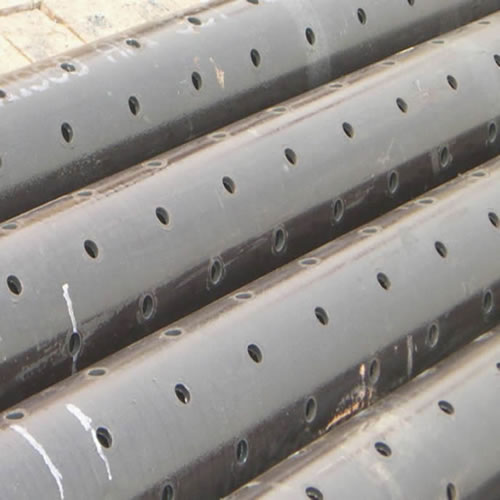
1. Understanding Perforated Casing Pipes
1.1 What is a Perforated Casing Pipe?
A perforated casing pipe is a type of pipe used in well construction that features a series of holes or slots along its length. These perforations allow fluids, such as oil, gas, or water, to enter the well while providing structural support to the wellbore.
1.2 Design and Features
Perforated casing pipes are designed with specific features to optimize their performance in various applications:
- Material: Typically made from high-strength steel or stainless steel to withstand harsh downhole conditions.
- Perforation Patterns: The arrangement and size of the perforations can vary, affecting the flow capacity and structural integrity of the pipe.
- Diameter and Length: Available in various diameters and lengths to suit different well sizes and depths.
2. Applications of Perforated Casing Pipes
2.1 Oil and Gas Industry
In the oil and gas industry, perforated casing pipes are used to facilitate the extraction of hydrocarbons from underground reservoirs.
- Production Wells: Installed in production wells to allow oil and gas to flow into the wellbore while preventing the entry of sand and other debris.
- Horizontal Drilling: Used in horizontal drilling applications to maximize reservoir contact and enhance production rates.
2.2 Water Well Drilling
Perforated casing pipes are essential in water well drilling, providing a conduit for water to flow into the well.
- Municipal Water Supply: Used in municipal water supply wells to ensure a steady flow of clean water.
- Irrigation Wells: Installed in irrigation wells to provide water for agricultural purposes.
2.3 Geothermal Energy
In geothermal energy projects, perforated casing pipes are used to extract hot water or steam from geothermal reservoirs.
- Geothermal Wells: Installed in geothermal wells to facilitate the flow of geothermal fluids to the surface for energy production.
3. Manufacturing Processes
3.1 Material Selection
The selection of materials for perforated casing pipes is crucial to ensure their durability and performance in challenging environments.
- Carbon Steel: Commonly used for its strength and cost-effectiveness, suitable for most applications.
- Stainless Steel: Preferred for corrosive environments due to its superior corrosion resistance.
3.2 Perforation Techniques
Various techniques are used to create perforations in casing pipes, each with its advantages and limitations.
- Drilling: Mechanical drilling of holes into the pipe, suitable for creating precise and uniform perforations.
- Laser Cutting: Uses laser technology to create clean and precise perforations, ideal for complex patterns.
- Water Jet Cutting: Employs high-pressure water jets to cut perforations, minimizing heat-affected zones.
3.3 Quality Control
Quality control measures are implemented throughout the manufacturing process to ensure the integrity and performance of perforated casing pipes.
- Inspection: Visual and dimensional inspections are conducted to verify the accuracy of perforations and overall pipe dimensions.
- Testing: Mechanical and corrosion resistance tests are performed to ensure the pipe meets industry standards.
4. Key Considerations for Selection and Installation
4.1 Selecting the Right Perforated Casing Pipe
Choosing the appropriate perforated casing pipe involves considering several factors:
- Well Conditions: Assess the geological and environmental conditions of the well to determine the required material and perforation pattern.
- Flow Requirements: Consider the expected flow rates and select a pipe with suitable perforation size and density to optimize fluid flow.
- Corrosion Resistance: Evaluate the potential for corrosion and select materials that offer adequate protection.
4.2 Installation Best Practices
Proper installation is critical to the performance and longevity of perforated casing pipes.
- Alignment and Centralization: Ensure the pipe is properly aligned and centralized within the wellbore to prevent damage and ensure even fluid flow.
- Sealing and Grouting: Use appropriate sealing and grouting techniques to prevent fluid migration and maintain well integrity.
- Monitoring and Maintenance: Regularly monitor the condition of the casing pipe and perform maintenance as needed to address any issues.
5. Challenges and Solutions
5.1 Sand Control
One of the primary challenges in using perforated casing pipes is controlling the entry of sand and other particulates into the well.
- Sand Screens: Install sand screens in conjunction with perforated casing pipes to filter out sand and debris.
- Gravel Packing: Use gravel packing techniques to stabilize the formation and prevent sand production.
5.2 Corrosion and Erosion
Corrosion and erosion can compromise the integrity of perforated casing pipes over time.
- Corrosion Inhibitors: Use chemical inhibitors to reduce the rate of corrosion in aggressive environments.
- Erosion-Resistant Coatings: Apply protective coatings to the pipe surface to minimize erosion and extend service life.
Related Posts
Water well screen pipe | Sand Control Screen
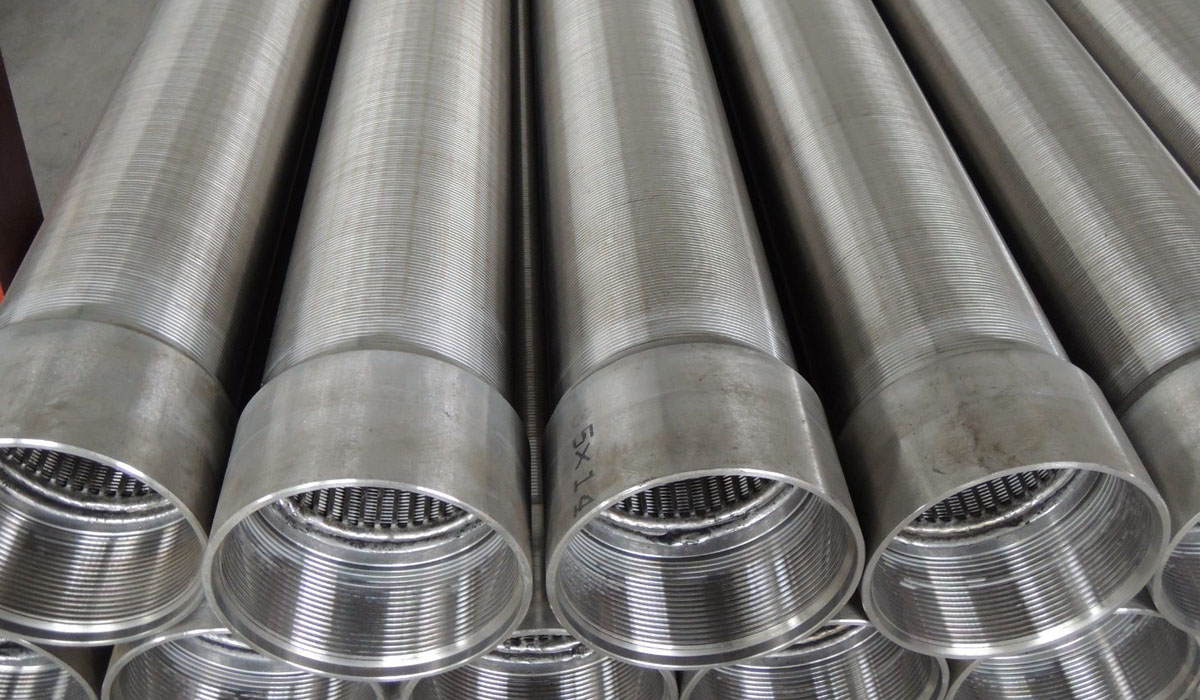
The water well screen is an important component of a well that allows water to flow into the well while preventing sediment and other debris from entering. The screen is typically located at the bottom of the well, near the aquifer. This is done to ensure that only clean water is collected and that any sediment or dirt is filtered out. The screen is typically made from a perforated pipe or other type of material that has small openings to allow water to pass through while blocking sediments from entering. Abter well screen is manufactured with a continuous v-shaped slot to reduce the entrance velocity of water and encrustation rates. Besides, Filson well screen has a large surface area without clogging, thus provide superior filtration performance. Well screen slot size selection is a critical step, typically based on the particle size analysis of the formation sample. With the standard slot size range from 0.005” to 0.5”, Filson well screen can control sand particles and silt from the well perfectly. Advantages of Water Well Screens 1. The V-shape section plane of water well screens creates the continuous slot, which can avoid blockage and make sure of the unimpeded water. Read more
Geothermal Pipe Based Screen | Sand Free Pipe Based Well Screen
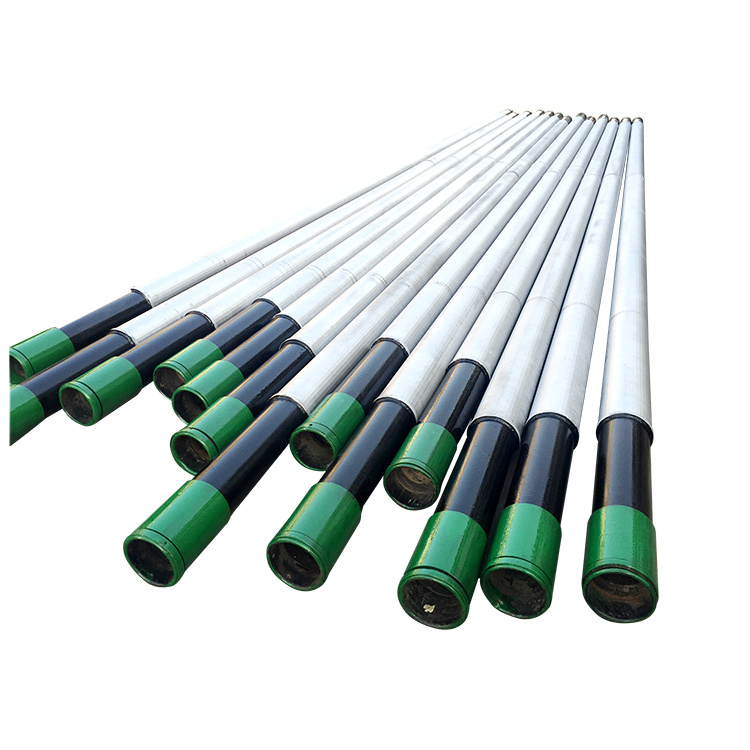
PARAMETER Geothermal Pipe based well screen specification: Nominal Diameter Pipe OD(mm) Weight lb/ftW.T[mm] Hole size In Holes per foot Total Areaofholes in2/ft Screen OD (in) 2-3/8 60 4.6[4.83] 3/8 96 10.60 2.86 2-7/8 73 6.4[5.51] 3/8 108 11.93 3.38 3-1/2 88.9 9.2[6.45] 1/2 108 21.21 4.06 4 101.6 9.5[5.74] 1/2 120 23.56 4.55 4-1/2 114.3 11.6[6.35] 1/2 144 28.27 5.08 5 127 13[6.43] 1/2 156 30.63 5.62 5-1/2 139.7 15.5[6.99] 1/2 168 32.99 6.08 6-5/8 168.3 24[8.94] 1/2 180 35.34 7.12 7 177.8 23[8.05] 5/8 136 42.16 7.58 7-5/8 194 26.4[8.33] 5/8 148 45.88 8.20 8-5/8 219 32[8.94] 5/8 168 51.08 9.24 9-5/8 244.5 36[8.94] 5/8 188 58.28 10.18 10-3/4 273 45.5[10.16] 5/8 209 64.79 11.36 13-3/8 339.7 54.5[9.65] 5/8 260 80.60 14.04 What is Geothermal Well Screen? Geothermal well screens are an essential component of a geothermal well system. They are used to filter and protect the geothermal well from debris and other contaminants that can be harmful to the system. Sand Control Screens are designed to be durable and reliable, providing long-term protection for the well. The geothermal well screen is a cylindrical tube made of a perforated metal or plastic material. The perforations are designed to allow Read more
Pre-packed well screen | Wire Wrapped Pre Packed Sand Screen
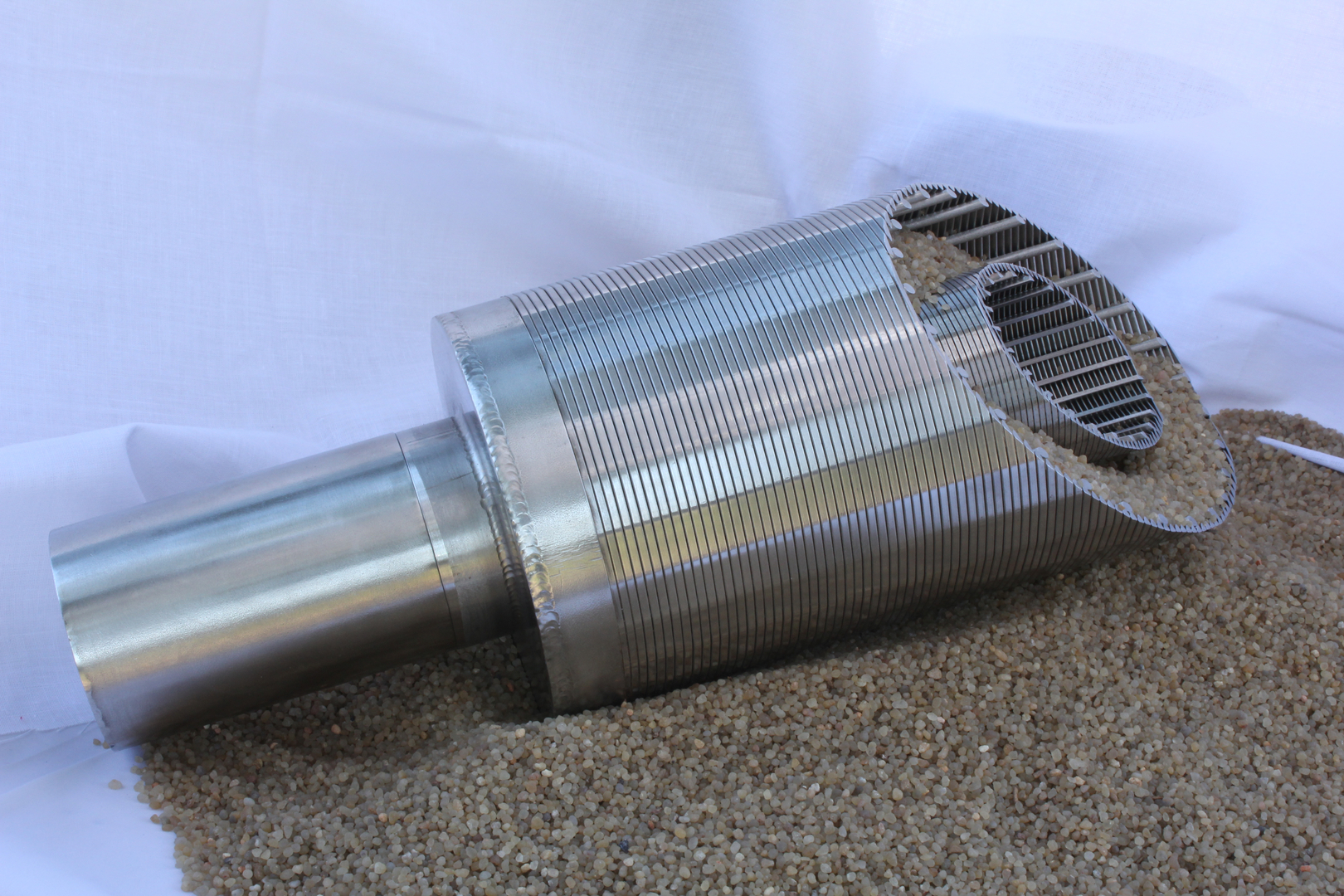
Pre Packed Sand Screen contains perforated base pipe, inner and outer screen jackets and graded sand between the jackets. It is a modification of wire wrapped screen which is used in well sorted sand or stand-alone completion. Graded sand, with or without resin coating, is considered as a filter for reservoir particles. Wire wrapped pre Pre Packed Sand Screen is used in wells where conventional gravel packing is not feasible or economical. The thickness of gravel layer can be varied to meet special requirement. What Is the Function of Gravel Pack? Gravel packing is one of popular sand-control technique used in oil, water and gas wells. It stabilizes the borehole and filters the sand from the flow, only allowing very fine particles in. Pre Packed Sand Screen wire wrapped sand screen brings it into full play in maximizing production as well as controlling the sand. Diameter: 168mm Material: stainless steel,carbon steel,etc Slot: 0.2mm End Connection: thread,coupling,etc thickness: 10mm Pre Packed Sand Screen PRODUCT SPECIFICATIONS Base Pipe Gravel Pack Perforations Screen OD (in.) ID (in.) Weight (lbs.) Coupling OD (in.) Thickness (in.) Size (in.) Holes/ft. OD (in.) Cylinder Area (sq. in./ft) 006 GA Inlet Area (sq. in./ft) 1.9 1.61 2.75 Read more
Well Screen Oil Casing , Pipe Based ,Sand Control,API 5CT
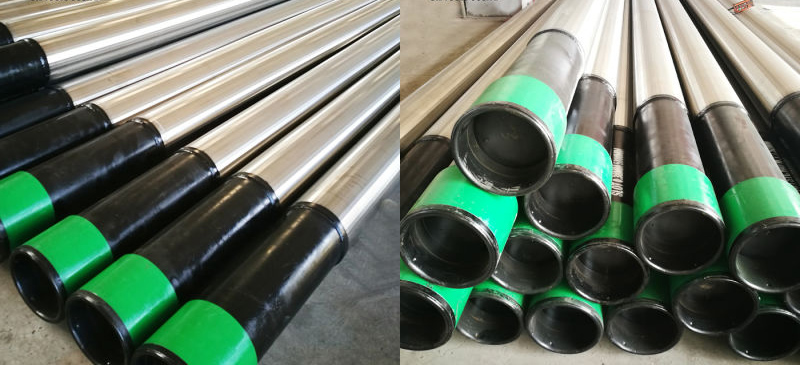
1. Grade: SUS 304 SUS304L, SUS316, SUS316L, or carbon steel 2. Slot Size: 0.02mm~15mm 3. Standard: DIN AISI ASTM 4. Certification: ISO9001, API 5CT 5.Pipe based well screens consist of base pipe,all-welded wedge wire screen and supporting rod.The base pipe is perforated or slotted API casing pipe,the base pipe can be stainless steel or carbon steel API 5CT casing.The all-welded wedge wire screens are welded together with base pipe by supporting rod. 6.Features of Pipe Based Well Screens: 1)Higher filtering accuracy: all-welded wedge wire screens as screen jacket with vee opening design makes the filtering accuracy higher,which can control sand better. 2)Excellent strength and resistance to deformation: The base pipe inside,the outside can be protected with the protection jacket added according to requirements,the integrated strength of the perforated base pipe only decreases 2~3% compared with the standard casing/oil tubing,so the pipe based well screens have enough integrated strength to resist to the pressure caused by strata.Even if some part of the well screens deformed,the slot of this part will not be widened,which makes higher sand controlreliability 3)More choices: the material of screen jacket can be stainless steel or carbon steel,the material can be chosen as per customers'requirement. 4)The smaller slot Read more
Slotted Casing Pipe | Slotted Liner Well Screen – API 5CT
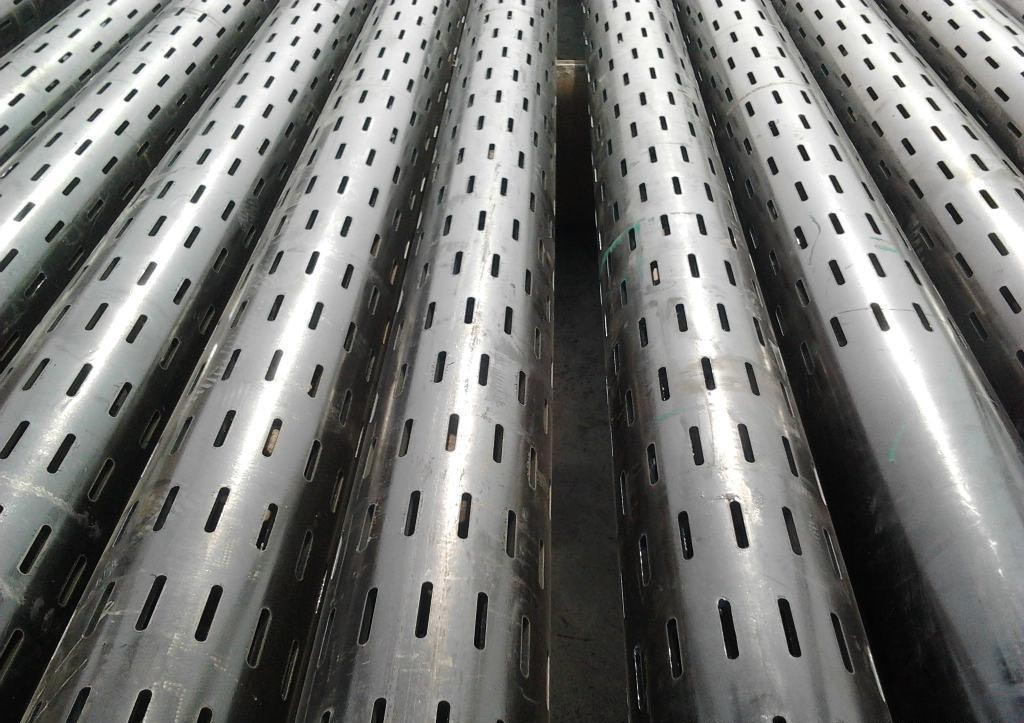
1. Introduction of Slotted Casing Pipe Casing pipe is a large-diameter pipe that serves as the structural retainer for the walls of oil and gas wells, or well bore. It is inserted into a well bore and cemented in place to protect both subsurface formations and the wellbore from collapsing and to allow drilling fluid to circulate and extraction to take place. Slotted casing pipe is a type of casing pipe that has slots machined into its surface. These slots are used to help control the flow of water, oil, and gas in a well bore. The slotted casing pipe is designed to allow water, oil, and gas to flow through the slots while preventing sand and other debris from entering the well bore. Slotted casing pipe is commonly used in oil and gas wells, water wells, and geothermal wells. 2. Types of Slotted Casing Pipe There are two main types of slotted casing pipe: open slot and perforated slot. Open slot casing pipe has slots that are cut into the surface of the pipe in a straight line. These slots are usually spaced evenly apart and are typically about 1/4 inch wide and 1/4 inch deep. Perforated slot Read more
Perforated Casing Pipe | Perforated Well Screen Piping
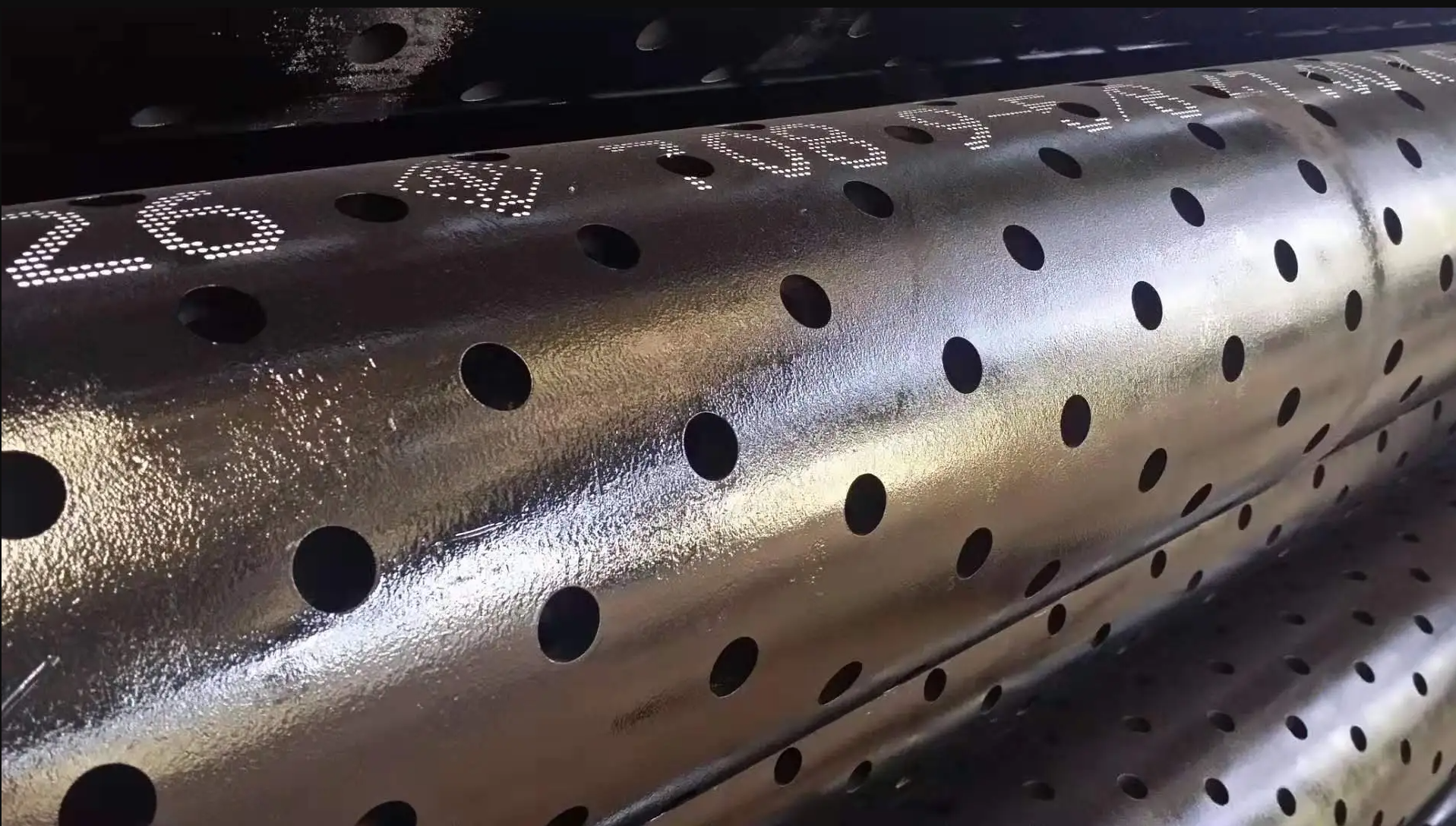
Applications of Perforated Pipe: Perforated well screen is a type of filter used in oil and gas wells. It is designed to control the flow of oil and gas from the well, while preventing sand and other debris from entering the well. perforation in the context of oil wells refers to a hole punched in the casing or liner of an oil well to connect it to the reservoir. Creating a channel between the pay zone and the wellbore to cause oil and gas to flow to the wellbore easily. In cased hole completions, the well will be drilled down past the section of the formation desired for production and will have casing or a liner run in separating the formation from the well bore. The final stage of the completion will involve running in perforating guns, a string of shaped charges, down to the desired depth and firing them to perforate the casing or liner. A typical perforating gun can carry many dozens of explosive charges. Commonly, perforation guns are run on E-line as it is traditional to use electrical signals from the surface to fire the guns. In more highly deviated wells, coiled tubingmay be used. Newer technologies Read more









